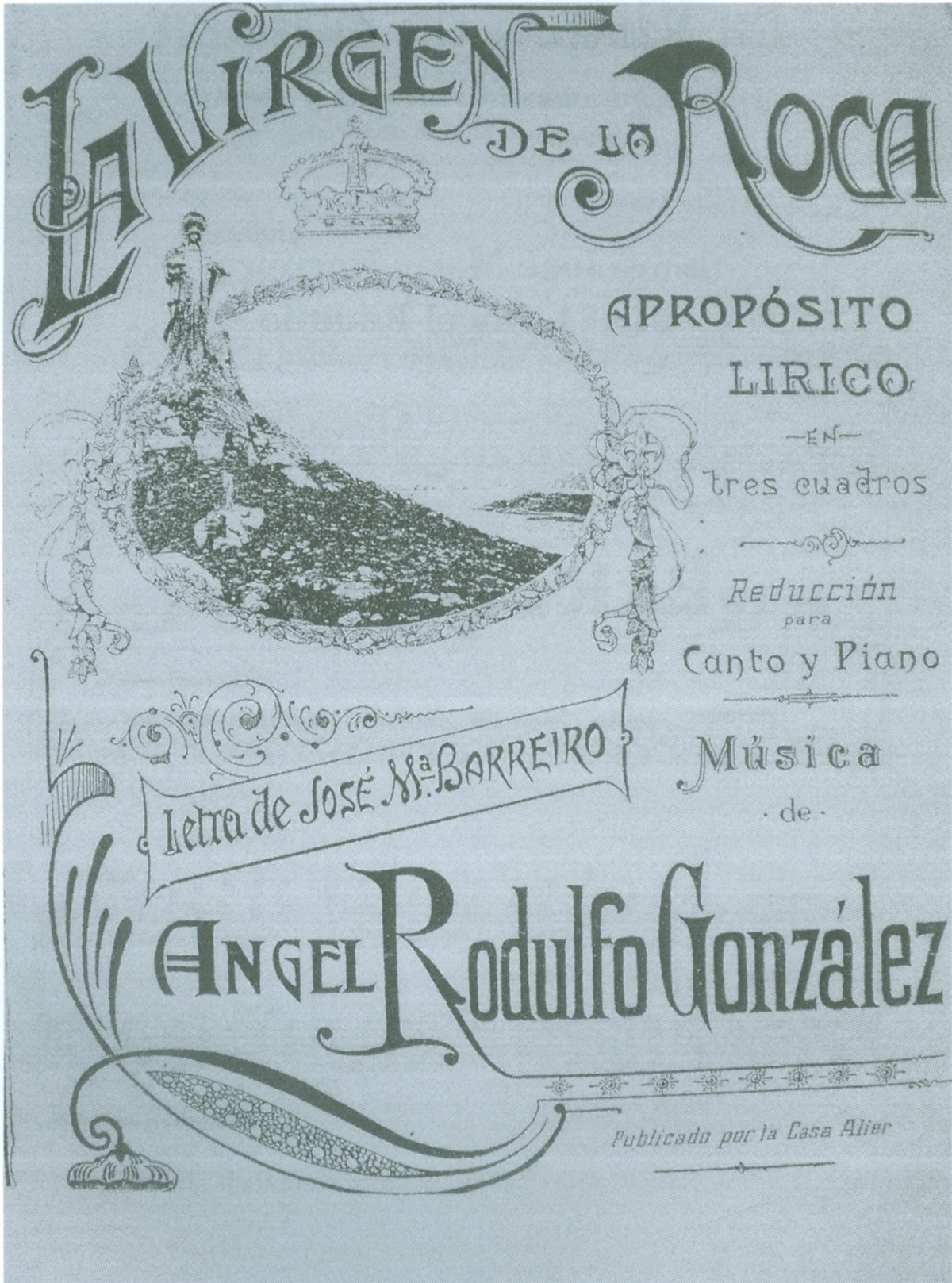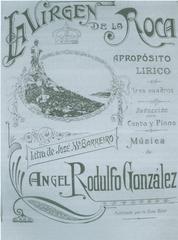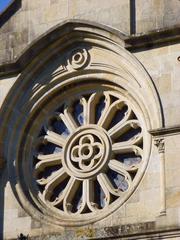
Catedral de Santa María de Tuy: Visiting Hours, Tickets, and Travel Guide
Date: 14/06/2025
Introduction
The Catedral de Santa María de Tuy stands as one of Galicia’s most remarkable architectural and spiritual landmarks. Situated in the historic border town of Tui, Spain, this cathedral forms a living chronicle of the region’s medieval past, architectural evolution, and ongoing role as a pivotal stop on the Portuguese Way of the Camino de Santiago. With origins dating back to the 6th century and major construction phases commencing in the 12th century, it offers visitors a captivating blend of Romanesque solidity, Gothic verticality, and Baroque artistry. Today, the cathedral is both an active place of worship and a welcoming hub for pilgrims and tourists alike, providing a gateway to the cultural and scenic charms of Tui.
This guide consolidates essential information on the cathedral’s history, architectural highlights, visiting hours, ticketing, accessibility, and practical travel tips to ensure a fulfilling experience.
(Galician Tourism Board; Spain.info; Catedral de Tui Official Site)
Table of Contents
- Historical Overview & Architectural Evolution
- Visitor Information
- Religious Services and Etiquette
- Frequently Asked Questions (FAQ)
- Summary & Visitor Recommendations
- References
Historical Overview & Architectural Evolution
Early Foundations and Romanesque Beginnings
Construction of the Catedral de Santa María de Tuy began in 1120 on the site of an earlier Visigothic diocese. The initial Romanesque design is evident in the robust west façade, thick granite walls, and semicircular arches. The north portal and interior capitals, adorned with biblical and animal motifs, are among the best-preserved Romanesque elements (Arteguias).
Gothic Transformation & Defensive Features
By the 13th century, the cathedral underwent significant Gothic modifications. The western portico, one of Spain’s earliest Gothic portals, features pointed arches and elaborate sculptural programs centered on the Virgin Mary and Nativity scenes. Its fortress-like exterior, complete with crenellated towers and battlements, reflects Tui’s borderland history and defensive needs (Spain.info; Portugal Visitor).
Baroque Additions and Artistic Heritage
The 17th and 18th centuries brought Baroque flourishes, most notably the grand main altarpiece (Retablo de la Expectación) and the cathedral’s ornate organ. The Chapel of the Relics houses sacred objects, including the relics of San Telmo, Tui’s patron saint (Civitatis).
Cloister and Chapter House
The 13th-century cloister, built in the Cistercian Gothic style, is the largest medieval cloister in Galicia. It connects to the Romanesque chapter house, the largest preserved in Galicia, and offers tranquil walkways, epigraphic stones, and access to the Torre de Soutomaior for panoramic views (Google Arts & Culture).
Restoration and Preservation
Extensive restoration campaigns have ensured the cathedral’s structural integrity and preserved its unique artistic heritage. Modern interventions prioritize traditional materials and respect for the monument’s historic character (Spanish Ministry of Culture).
Visitor Information
Location and Access
- Address: Plaza de San Fernando, s/n, 36700 Tui, Pontevedra, Spain
- Centrally located in Tui’s old quarter, the cathedral is easily reached on foot from city center hotels and public transport stops. Regional rail and road links connect Tui to Vigo, Pontevedra, and Portugal. Public parking is available nearby (Catedral de Tui Official).
Visiting Hours
Visiting hours follow a seasonal schedule (Catedral de Tui Official):
- Winter (Oct–Mar):
- Mon–Sat: 10:45–14:00 / 16:00–19:00
- Sun: 09:00–12:30 / 16:00–19:00
- Summer (Mar–Oct):
- Mon–Sat: 10:45–14:00 / 16:00–20:00
- Sun: 09:00–12:30 / 16:00–20:00
- Peak Summer (July–Sept):
- Mon–Sat: 10:45–20:00
- Sun: 09:00–12:30 / 16:00–20:00
Last admission is 30 minutes before closing. Hours may be adjusted for religious or civic events.
Admission and Ticketing
- General Admission: €3 (includes audio guide)
- Rooftop Guided Tour (July–September): €9 per person, reservation recommended
- Combined Tours: Options available for cathedral + historic center, or cathedral + north gallery/rooftops; prices vary (Visitas Guiadas Tui)
Pilgrims and worshippers typically have free entry for prayer. Guided tours and special exhibition access may require tickets.
Guided & Self-Guided Tours
- Guided Tours: Available in Spanish, Galician, and Italian; advance booking is advised, especially for rooftop access and high season (Civitatis).
- Self-Guided Visits: Admission includes an audio guide (multiple languages) covering the nave, chapels, cloister, museum, and key artworks (Minube).
Accessibility
- Mobility: Most public areas are accessible to visitors with limited mobility. Some historic spaces—especially the cloister and rooftops—have steps and uneven flooring (Civitatis).
- Facilities: Restrooms are available; pets are not permitted.
Travel Tips
- Best Time to Visit: Early morning or late afternoon for fewer crowds and best lighting.
- Photography: Permitted in most areas (no flash or tripods).
- Weather: Galicia’s climate is variable; a light raincoat is useful in spring/autumn (Spain.info).
- Pilgrims: Obtain Camino credentials and stamps at the cathedral; Tui is a key starting point for the Camino Portugués (Santiago-Compostela.net).
Nearby Attractions
- Tui’s medieval quarter, city walls, San Telmo Church, Miño River promenade, and easy access to Valença do Minho (Portugal) are all within walking distance.
- Local eateries offer regional Galician cuisine.
Religious Services and Etiquette
- Mass Schedule: Varies by day and season; typically, Saturday Mass is at 11:15 a.m. (Horarios Misa)
- Other Ceremonies: Baptisms, weddings, and confessions are regularly held.
- Visitor Conduct: Modest dress is required (shoulders and knees covered); maintain silence during services.
Frequently Asked Questions (FAQ)
Q: What are the Catedral de Santa María de Tuy visiting hours?
A: The schedule varies seasonally. Generally, open mid-morning to early evening. Check the official website for updates.
Q: Is there an admission fee?
A: General admission is €3 (audio guide included); rooftop tours and special exhibitions require additional tickets.
Q: Are guided tours available in English?
A: Standard tours are in Spanish, Galician, and Italian. Check with local guides for English options (Visitas Guiadas Tui).
Q: Is the cathedral accessible for wheelchair users?
A: Most areas are accessible, but some historic sections (cloister, rooftops) have limited access.
Q: Can I take photographs inside?
A: Yes, in most areas without flash or tripods.
Q: Are pets allowed inside?
A: No, pets are not permitted.
Summary & Visitor Recommendations
The Catedral de Santa María de Tuy is a multifaceted treasure of Galicia, offering visitors a unique intersection of art, architecture, history, and spirituality. From its Romanesque and Gothic features to its Baroque altarpiece and cloister, the cathedral’s layered history is evident at every turn. Pilgrims and tourists alike will find practical amenities, guided experiences, and a welcoming atmosphere, all set against the scenic backdrop of Tui’s historic quarter.
Visitor Recommendations:
- Plan your visit during quieter hours for the best experience.
- Reserve guided or rooftop tours in advance during peak season.
- Explore Tui’s old town and nearby attractions for a deeper cultural immersion.
- Use the [Audiala app] for real-time updates and interactive maps.
For the latest information on hours, tickets, and special events, consult the Catedral de Tui Official Site and affiliated tourism resources.
References
- Galician Tourism Board
- Spain.info
- Arteguias
- ABC Viajar
- Santiago-Compostela.net
- Catedral de Tui Official Site
- Visitas Guiadas Tui
- Civitatis
- Horarios Misa
- Google Arts & Culture
- Minube
- Portugal Visitor
- Spanish Ministry of Culture
For an enhanced visit, include high-quality images with descriptive alt text (e.g., “Catedral de Santa María de Tuy facade”, “Gothic cloister in Tui cathedral”), and consider embedding an interactive map or virtual tour.

